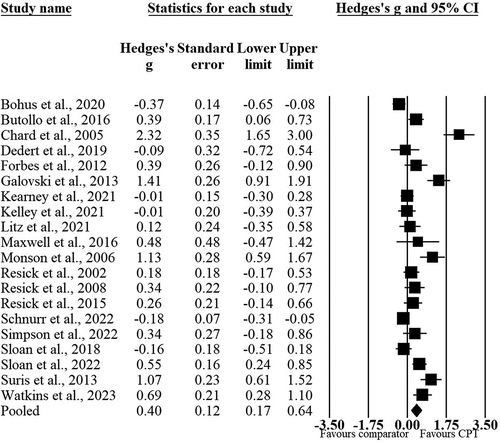Figures & data
Table 1. Study characteristics.
Table 2. Allegiance scoring tool.
Figure 2. Forest plot of effect sizes for cognitive processing therapy (N = 20 studies).

Supplemental Material
Download MS Word (374.7 KB)Data availability statement
The data used in the present study are available from the authors upon request.


